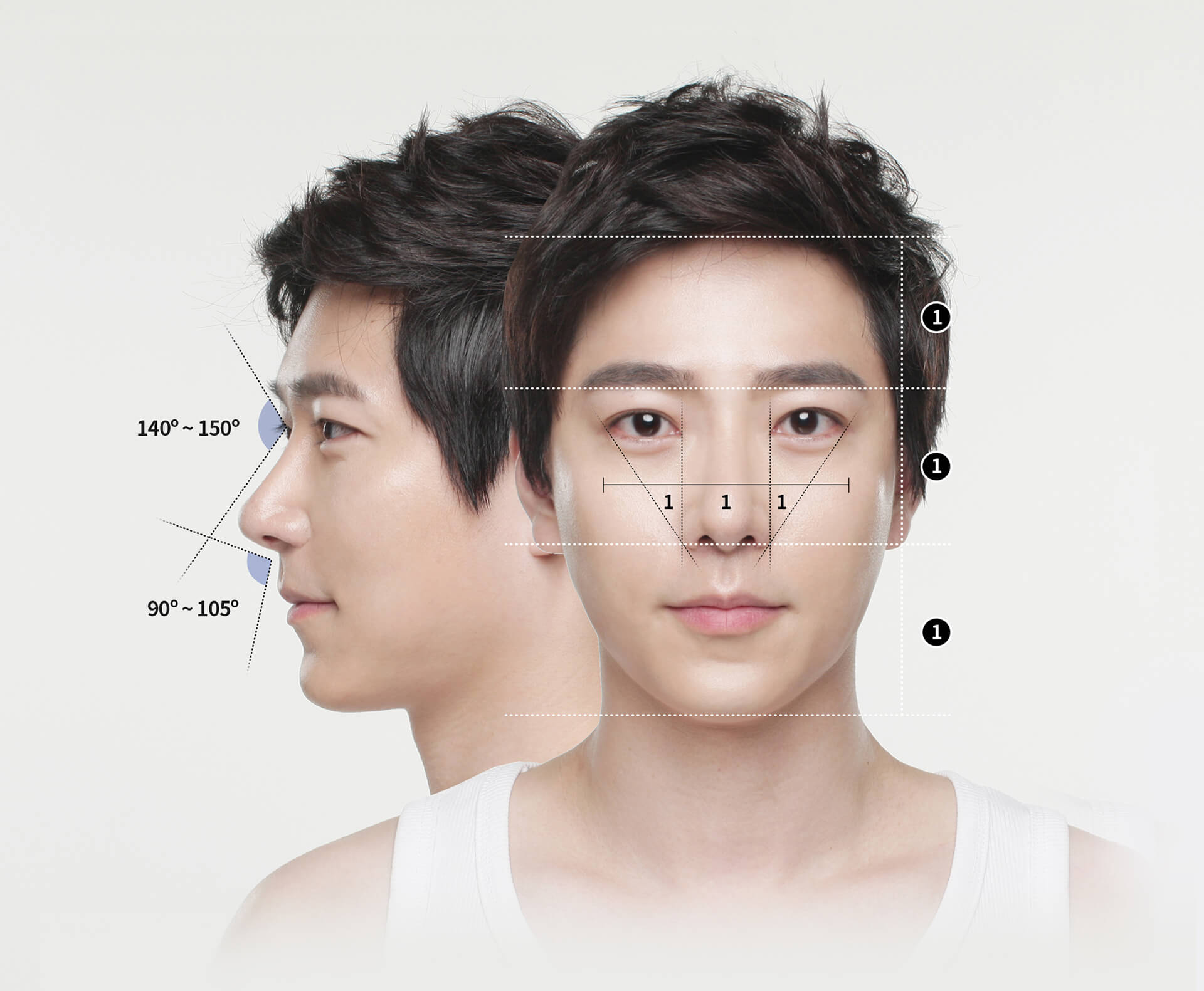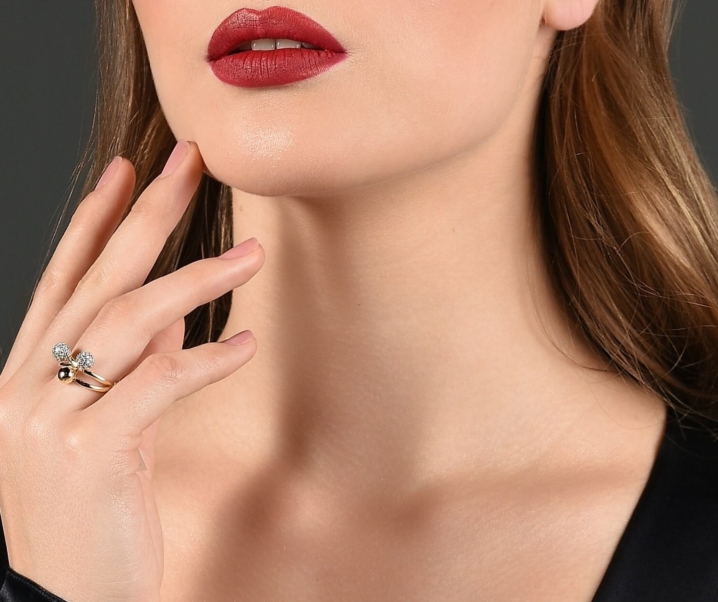When it comes to rhinoplasty, flat nose surgery is one of the most commonly performed nose surgery in Korea. Because many Asians have a low nose bridge and bulbous nose tip, which makes their face look flat and volumeless.
Not always the higher the better.
Above all, a more prominent and defined nose shape can add dimensions to your face and make it look slimmer. However, it’s not just about getting a higher nose bridge.
But rather, it’s about raising your nose bridge height and defining your nose tip to create a nose that suits your face and enhances your existing features.
So if you have a flat nose, fix it. And here’s what you should know before getting flat nose rhinoplasty.
What is flat nose surgery?
Flat nose surgery elevates the height of your nose bridge, and also makes your nose tip more projected. In other words, it changes the structure of your nose to give it a more defined look.
Generally, its best that both your nose bridge and nose tip should be augmented together, in order to get a beautiful nose line, from top to tip. But how high should your nose bridge be, and how sharp should your nose tip be?
What is the golden ratio for Korean noses?
You should know by now that our nose is the most prominent feature on our face, and our nose tip, the focal point on our face. Hence, factors such as height of nose bridge, length and width of nose, and even nostril size, has to be taken into consideration when designing a new nose.
In fact, a modest to medium nose bridge height is more favoured among Koreans. Because it looks too unnatural to have a high nose bridge on an Asian face.

Optimal nose ratio for women:
- Ideal ratio between the forehead-eyebrows, eyebrows-nose, and nose-chin is 1:1:1.
- Optimal ratio between the length of eyes and width of nose is 1:1:1.
- Inner corner of eyes and corner of nose should be vertically aligned.
- Outer corner of eyes and corner of nose should be diagonally aligned.
- Ideal angle for the “sunken” area at the top of nose (nasofrontal angle) is 120°~140°.
- Optimal angle between the nose and upper lip (nasolabial angle) is 95°-110°.
- Having a supratip break (subtle indentation just above nose tip) is considered attractive for a woman’s nose.
- Slightly curved nose bridges makes women look more feminine.

Optimal nose ratio for men:
- Ideal ratio between the forehead-eyebrows, eyebrows-nose, and nose-chin is 1:1:1.
- Optimal ratio between the length of eyes and width of nose is 1:1:1.
- Inner corner of eyes should be vertically aligned with corner of nose.
- Outer corner of eyes should be diagonally aligned with corner of nose.
- Ideal angle for the “sunken” area at the top of nose (nasofrontal angle) is 140°~150°.
- Optimal angle between the nose and upper lip (nasolabial angle) is 90°-105°.
- Straight nose bridges makes men look more masculine.
How is flat nose surgery in Korea done?
Flat nose rhinoplasty focuses on your nose bridge and nose tip. It aims to create a well-defined yet natural looking nose by combining nose bridge enhancement and tip plasty. Let’s go into more details, shall we?
Nose bridge enhancement
Nose bridge enhancement aka nose bridge lift surgery, is done to increase the height of your nose bridge. Usually by using an implant. Here are the 4 types of nose bridge implants available but do note that silicone is the most commonly used implant.
1. Silicone
Top choice of material for nose bridges.
Pros:
- Most popular choice of implant
- No resorption nor warping so nose shape remains the same over time
- Allows for creating a smooth curve for your nose bridge
- Safe and long lasting result
- Easy to remove later
Cons:
- Body rejection of silicone can lead to short nose
2. Rib cartilage
In most cases, rib cartilage is mostly used during revision rhinoplasty rather than primary rhinoplasty actually. Because of its cons.
Pros:
- Strong supporting strength and durability
- Ample quantity for harvest
- Low risk of infection
- Low risk of body rejection
Cons:
- Most expensive
- Prone to resorption which might lead to a less defined nose shape over time
- Risk of warping where your nose might bend or get twisted out of shape
- Longer healing process
- Results in minimal scarring at your rib area
3. Gore-tex / Sili-tex
Both gore-tex and sili-tex are hardly used actually. Because of their cons.
Pros:
- Integrates well with nose tissues
- Lesser chance of rejection as compared to silicone
Cons:
- Nearly impossible to remove later if you want a revision (due to integration)
- Prone to resorption which might lead to a less defined nose shape over time
- Might shrink which leads to loss of volume
- Less natural results than silicone
Tipplasty
Tip pasty aka nose tip enhancement surgery can lift, lower, or create a new nose tip. It refines your nose tip to make it sharper, creating a more 3-dimensional look. Most common type of materials used for nose tip implants include ear cartilage and rib cartilage.
1. Ear cartilage
Pros:
- Natural results for tip due to its curvy shape
- Low risk of body rejection as it is from your body
Cons:
- Limited quantity for harvest
- Weak supporting strength (hence it is only used for nose tip)
2. Rib cartilage
Pros:
- Strong supporting strength and durability
- Ample quantity for harvest
- Low risk of infection
- Low risk of body rejection
Cons:
- Most expensive
- Prone to resorption which might lead to a less defined nose tip over time
- Risk of warping where your nose tip might bend or get twisted out of shape
- Longer healing process
- Results in minimal scarring at your rib area
What are the methods used for a flat nose surgery?
There are 2 methods used for flat nose rhinoplasty – open method and closed method. And of course, the open rhinoplasty approach is most preferred. Because it allows the surgeon to have full visibility of your nasal structures, which allows for greater precision in reshaping your nose. In short, more accurate results will be delivered.
If you are unsure of how you want your nose to look like, you can check out the other alternatives for flat nose surgery first before getting it!
1. Open rhinoplasty
The open approach involves a cut across your columella (the narrow strip of skin separating your nostrils). This method allows the surgeon full access to your nose, and enables for major or complex reshaping. Hence, a high chance of achieving your desired results.
Benefits:
- Allows for complex reshaping of nose
- Minimize chances of nasal cartilage distortion
- Enables complex reshaping of nose tip
- Produces more accurate results
- Natural looking results
Downsides:
- Minimal scarring (but scars fade over time)
2. Closed rhinoplasty
The closed approach involves incisions inside your nose, so there’s no obvious scarring. However, this method limits the surgeon’s access of your nose. Hence, major or complex reshaping is not possible. It is suitable only if minor work is required.
Benefits:
- Non-visible scarring
- Shorter recovery time
- Natural looking results
Downsides:
- Results might be short of expectations
- Risk of implant deviation
- Risk of nasal implant infection
- Doesn’t allow for complex reshaping of nose
How long does the surgery take?
A flat nose rhinoplasty in Korea usually lasts 2~3 hrs and is performed under local anesthesia so you will not feel any pain.
When can I see results?
Major swelling and bruising for rhinoplasty lasts up to 1 week but accurate results are visible after 6 months. Final results are seen after 1 year. Also, you will need to wear an external splint (placed on the nose) to support the shape of your new nose. And it will usually be removed after 7 days.
Do take note that the success of your flat nose surgery not only lies in the hands of your surgeon but also how you well you recover after surgery. So learn how to properly care for yourself during the recovery period by reading our article on nose surgery aftercare and post-op instructions.
Actual recovery time vary among individuals, and is subjected to one’s health condition & healing response.
How long should I stay in Korea?
A nose job in Korea is not considered a major surgery so hospitalization is not required. But do stay until your stitches are removed. And go shopping in the meantime!
Stitch removal
Stitches are usually removed 7 days after surgery.
Cautions on stitch removal
If you remove the stitches earlier then advised, your wound might reopen, causing an infection. And if you remove it too late, you risk further scarring and pigmentation.
Don’t rush the recovery procedure for best results!
Sometimes due to time constraints, you might consider having your stitches removed at the local hospitals in your home country. Although that is possible (but not recommended), it depends on how well you have been healing and is also subjected to doctor’s approval.
Alternatives to a flat nose surgery
The other alternatives to flat nose rhinoplasty are nose fillers and nose threading. However, such procedures are not permanent and the effects are not that great. Fillers and threading results typically lasts from 6~12 months.
It is very important to note that if you have an existing nose implant, it is not recommended to inject nose fillers nor do nose threading. And if you are planning to get rhinoplasty, make sure that fillers and threads are completely removed at least 2 weeks before your surgery.
What other surgery complements a flat nose surgery?
Sometimes, getting a nose job alone might not be sufficient to achieve the looks that you want!
1. Eye plastic surgery
Very often, plastic surgery for eyes is combined with rhinoplasty to further enhance your beauty and looks.
2. Philtrum reduction surgery
Your philtrum does influence the results of your nose job, especially if you have a long philtrum. In such cases, you might need a philtrum reduction surgery.
3. Lip surgery
Well, a smile goes a long way. You may not be born with the perfect lips, but lip surgery can help you achieve that perfectly shaped pout.
4. Facial Contouring surgery
Having a face shape that complements your eyes and nose will further enhance your beauty. But if you don’t have that perfect v-shaped face, facial contouring surgery will help you achieve it.
Conclusion
In short, if you are conscious about having a low nose bridge and flat nose tip, go for a flat nose surgery. And if its your primary rhinoplasty (meaning your first nose job), using silicone for your nose bridge and ear cartilage for your nose tip, would give pretty good results.
But, make sure to go for a nose that complements and brings out the beauty of your existing features instead of just getting a tall nose bridge. You will be amazed at how your new nose can actually change the way you look, for the better, of course!
cosmetic surgery in koreakorean nose jobkorean rhinoplastynose job in koreaplastic surgery in korearhinoplasty in korea









What do you think?